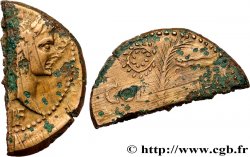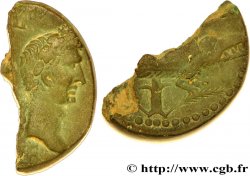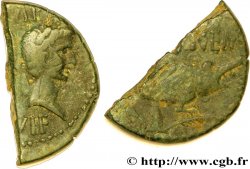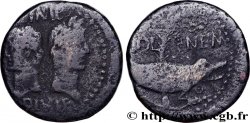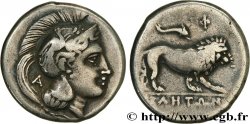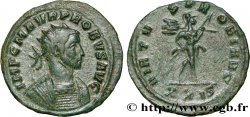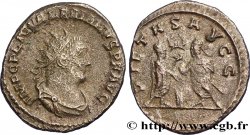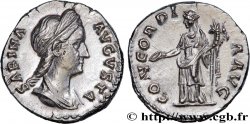Obverse
Obverse legend : IMP// DIVI F.
Obverse description : Têtes adossées d'Agrippa coiffée de la couronne rostrale à gauche et d'Auguste nue à droite ; grènetis circulaire.
Obverse translation : “Imperator Divi Filius”, (L’imperator fils du divin).
Reverse
Reverse legend : COL - NEM.
Reverse description : Crocodile enchaîné à un palmier qui est surmonté d'une couronne ; sous le crocodile, deux palmettes ; grènetis circulaire.
Reverse translation : “Colonia Nemausus”, (Colonie de Nîmes).
Commentary
Historical background
AUGUSTUS and AGRIPPA
(27 BC - 14 AD)
Nemausus (Nîmes) is the capital of the Arecomic Volques. According to the coinage, it is largely influenced by Marseille. During the 1st century BC, in order to counterbalance the influence of Narbonne, it seems that she supported the revolt of Sertorius in Spain against Metellus and Pompey. The colony of Nîmes would be founded by Tiberius Nero, husband of Livia and father of Tiberius and Drusus senior, in 45 or 44 BC.. -VS. Some authors see it rather as a creation of Caesar himself on his return from the Spanish campaign.. The city receives the "Jus Latinum". After the Battle of Actium in 31 BC. -VS. , which marks the victory of Octavian and Agrippa over the fleet of Marc Antony and Cleopatra, and following the conquest of Egypt the following year, Octavian demobilizes part of his legions, which have become too numerous after the victory. Veterans receive their "honesta missio", a sort of pension in cash and land. Many veterans come to settle in the province of Narbonnaise, and a large contingent settles in Nîmes. The very important coinage which seems to start from 27 BC. -VS. shows the commercial dynamism of the city, which became one of the richest in the region and left us impressive monuments (Pont du Gard, Maison Carrée). The city changes status in 24 BC. -VS. It becomes a Roman colony under the name of "Colonia Augusta Nemausus" and dominates the territory of the Volques Arécomiques.









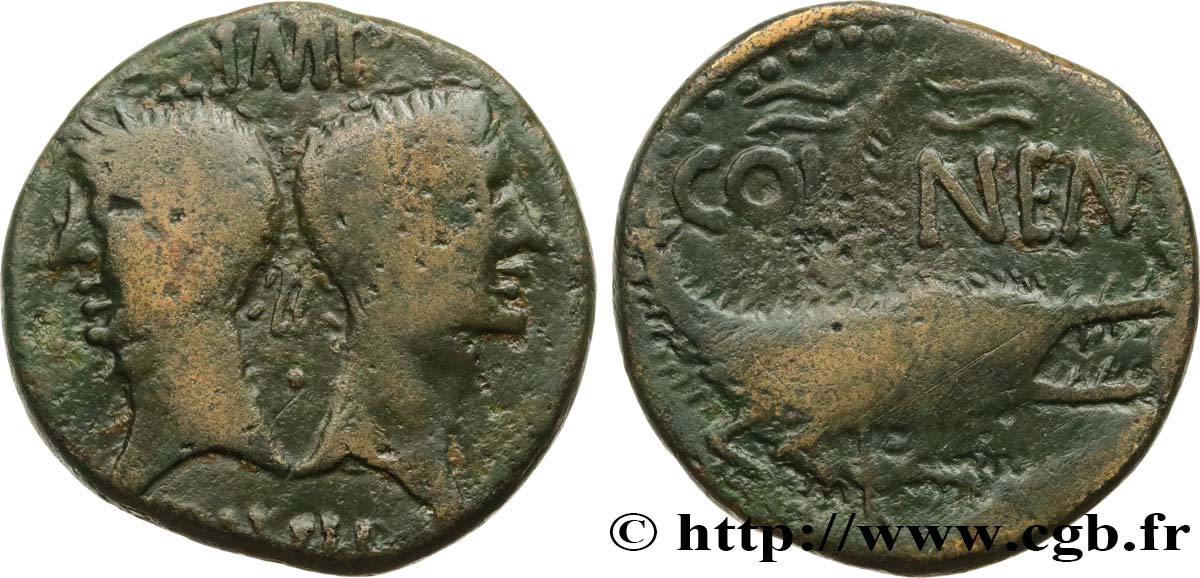
 Report a mistake
Report a mistake Print the page
Print the page Share my selection
Share my selection Ask a question
Ask a question Consign / sell
Consign / sell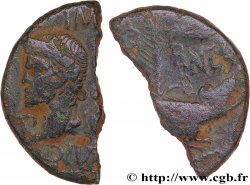
 Full data
Full data